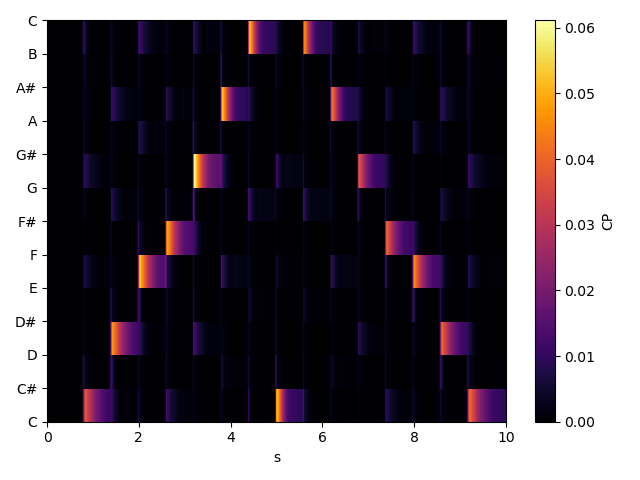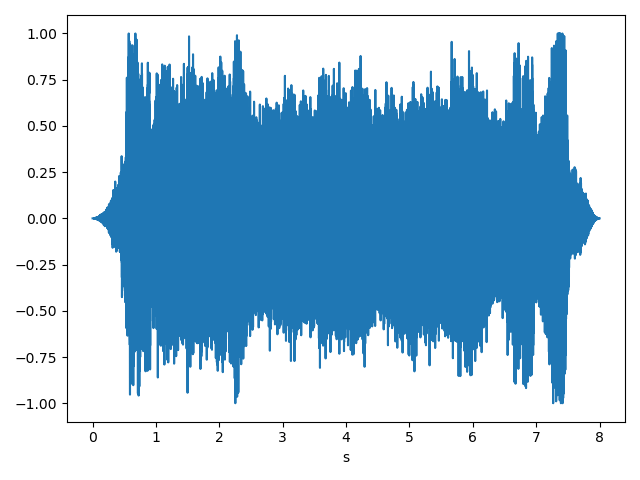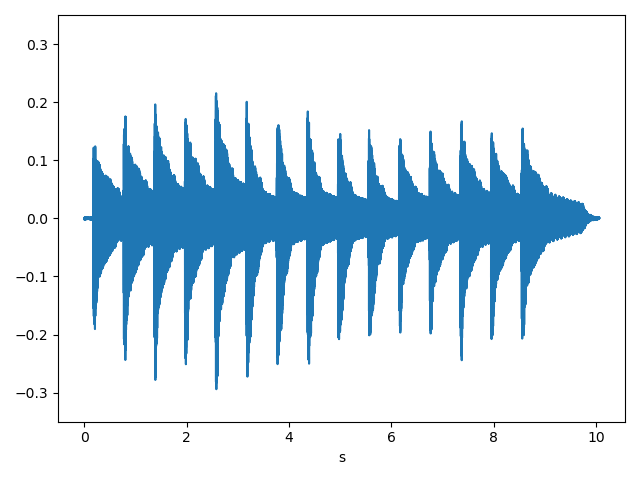1 unstable release
| 0.1.0 | Jun 25, 2023 |
|---|
#1080 in Algorithms
19KB
247 lines
Constant-Q Sliding DFT in C++, Rust, and Python
Forward and inverse Constant-Q Sliding DFT (QDFT) according to [1] with following features:
- Arbitrary octave resolution (quarter tone by default)
- Built-in parameterizable cosine family window (Hann by default)
- Customizable time and frequency domain data type in C++
- Endless single or multiple sample processing at once
- Optional analysis latency control parameter
- Real-time analysis and synthesis capability
The Constant-Q Sliding Discrete Fourier Transform (QDFT) is a recursive approach to compute the Fourier transform sample by sample. This is an efficient implementation without the FFT calculus. Just define an arbitrary frequency range and octave resolution to obtain the corresponding DFT estimate. In contrast to the linear SDFT, frequency bins of the QDFT are logarithmically spaced. Thus, both high and low frequencies are resolved with the same quality, which is particularly useful for audio analysis. Based on the QDFT, a chromagram feature with detailed instantaneous frequency estimation is planned for the future release.
WIP
- Readme
- Docstrings
- PyPI package qdft
- Rust package
- Sliding chromagram as a bonus (a draft is already included in the Python package)
Basic usage
C++
#include <qdft/qdft.h> // see also cpp folder
double sr = 44100; // sample rate in hertz
std::pair<double, double> bw = { 50, sr / 2 }; // lowest and highest frequency in hertz to be resolved
double r = 24; // octave resolution, e.g. number of DFT bins per octave
QDFT<float, double> qdft(sr, bw, r); // create qdft plan for custom time and frequency domain data types
size_t n = ...; // number of samples
size_t m = qdft.size(); // number of dft bins
float* x = ...; // analysis samples of shape (n)
float* y = ...; // synthesis samples of shape (n)
std::complex<double>* dft = ...; // dft matrix of shape (n, m)
qdft.qdft(n, x, dft); // extract dft matrix from input samples
qdft.iqdft(n, dft, y); // synthesize output samples from dft matrix
The time domain data type defaults to float and the frequency domain data type to double.
Rust
use qdft::QDFT; // see also rust folder
// just a shortcut for our complex number type
#[allow(non_camel_case_types)]
type c64 = num::complex::Complex<f64>;
// zero number trait, e.g. c64::zero()
use num::Zero;
let samplerate = 44100.0; // sample rate in hertz
let bandwidth = (50.0, samplerate / 2.0); // lowest and highest frequency in hertz to be resolved
let resolution = 24.0; // octave resolution, e.g. number of DFT bins per octave
let latency = 0.0; // analysis latency adjustment between -1 and +1
let window = Some((0.5, -0.5)); // hann window coeffs
// create qdft plan for custom time and frequency domain data types
let mut qdft = QDFT::<f32, f64>::new(
samplerate,
bandwidth,
resolution,
latency,
window);
let n = ...; // number of samples
let m = qdft.size(); // number of dft bins
let mut x = vec![f32::zero(); n]; // analysis samples of shape (n)
let mut y = vec![f32::zero(); n]; // synthesis samples of shape (n)
let mut dft = vec![c64::zero(); n * m]; // dft matrix of shape (n, m)
qdft.qdft(&x, &mut dft); // extract dft matrix from input samples
qdft.iqdft(&dft, &mut y); // synthesize output samples from dft matrix
Alternatively use ndarray instead of a flat array to allocate the DFT matrix, as shown in the analysis.rs example.
Python
from qdft import QDFT # see also python folder
sr = 44100 # sample rate in hertz
bw = (50, sr / 2) # lowest and highest frequency in hertz to be resolved
r = 24 # octave resolution, e.g. number of DFT bins per octave
qdft = QDFT(sr, bw, r) # create qdft plan
n = ... # number of samples
m = qdft.size # number of dft bins (if need to know in advance)
x = ... # analysis samples of shape (n)
dft = qdft.qdft(x) # extract dft matrix of shape (n, m) from input samples
y = qdft.iqdft(dft) # synthesize output samples from dft matrix
Feel free to obtain current version from PyPI by executing pip install qdft.
Examples
| QDFT | Chroma12 |
|---|---|
 |
 |
| face.py | cmajor.py |
 |
 |
See also
If you're interested in Sliding DFT with linear frequency resolution, don't forget to browse my jurihock/sdft project!
References
-
Russell Bradford et al. (2008). Sliding with a Constant Q. International Conference on Digital Audio Effects. https://www.dafx.de/paper-archive/2008/papers/dafx08_63.pdf
-
Russell Bradford et al. (2005). Sliding is Smoother Than Jumping. International Computer Music Conference Proceedings. http://hdl.handle.net/2027/spo.bbp2372.2005.086
-
Eric Jacobsen and Peter Kootsookos (2007). Fast, Accurate Frequency Estimators. IEEE Signal Processing Magazine. https://ieeexplore.ieee.org/document/4205098
License
github.com/jurihock/qdft is licensed under the terms of the MIT license. For details please refer to the accompanying LICENSE file distributed with it.
Dependencies
~465KB